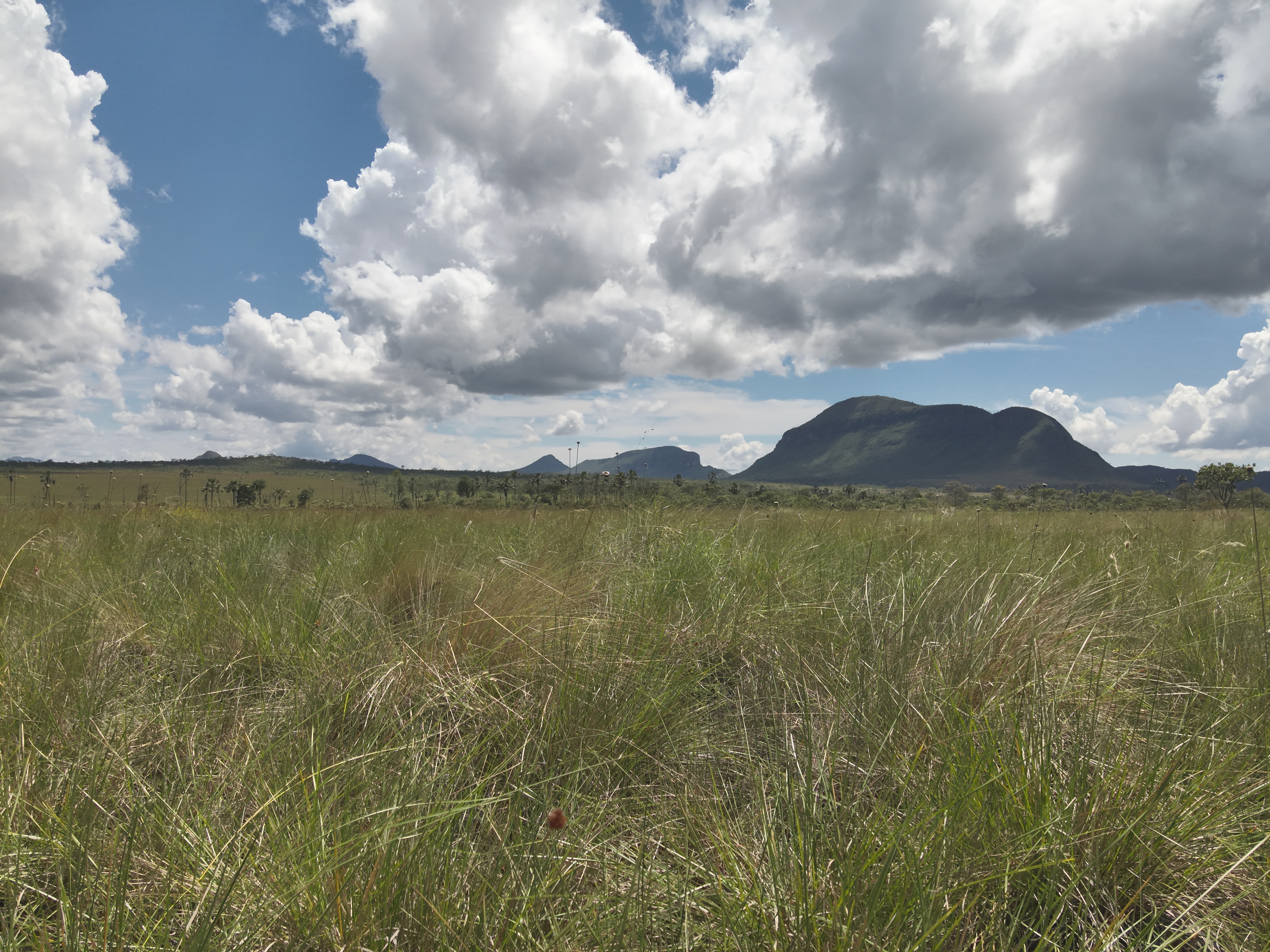Publications
Group highlights
(For a full list of publications, see our Google Scholar pages: Amy Zanne, Baptiste Wijas, Paulo Bernardino)
Increasing drought pressure under anthropogenic climate change may jeopardize the potential of tropical forests to capture carbon in woody biomass and act as a long-term carbon dioxide sink. To evaluate this risk, we assessed drought impacts in 483 tree-ring chronologies from across the tropics and found an overall modest stem growth decline (2.5% with a 95% confidence interval of 2.2 to 2.7%) during the 10% driest years since 1930. Stem growth declines exceeded 10% in 25% of cases and were larger at hotter and drier sites and for gymnosperms compared with angiosperms. Growth declines generally did not outlast drought years and were partially mitigated by growth stimulation in wet years. Thus, pantropical forest carbon sequestration through stem growth has hitherto shown drought resilience that may, however, diminish under future climate change.
Pieter A. Zuidema, Peter Gronendijk, (…) Bruna Hornink, (…) Flurin Babst
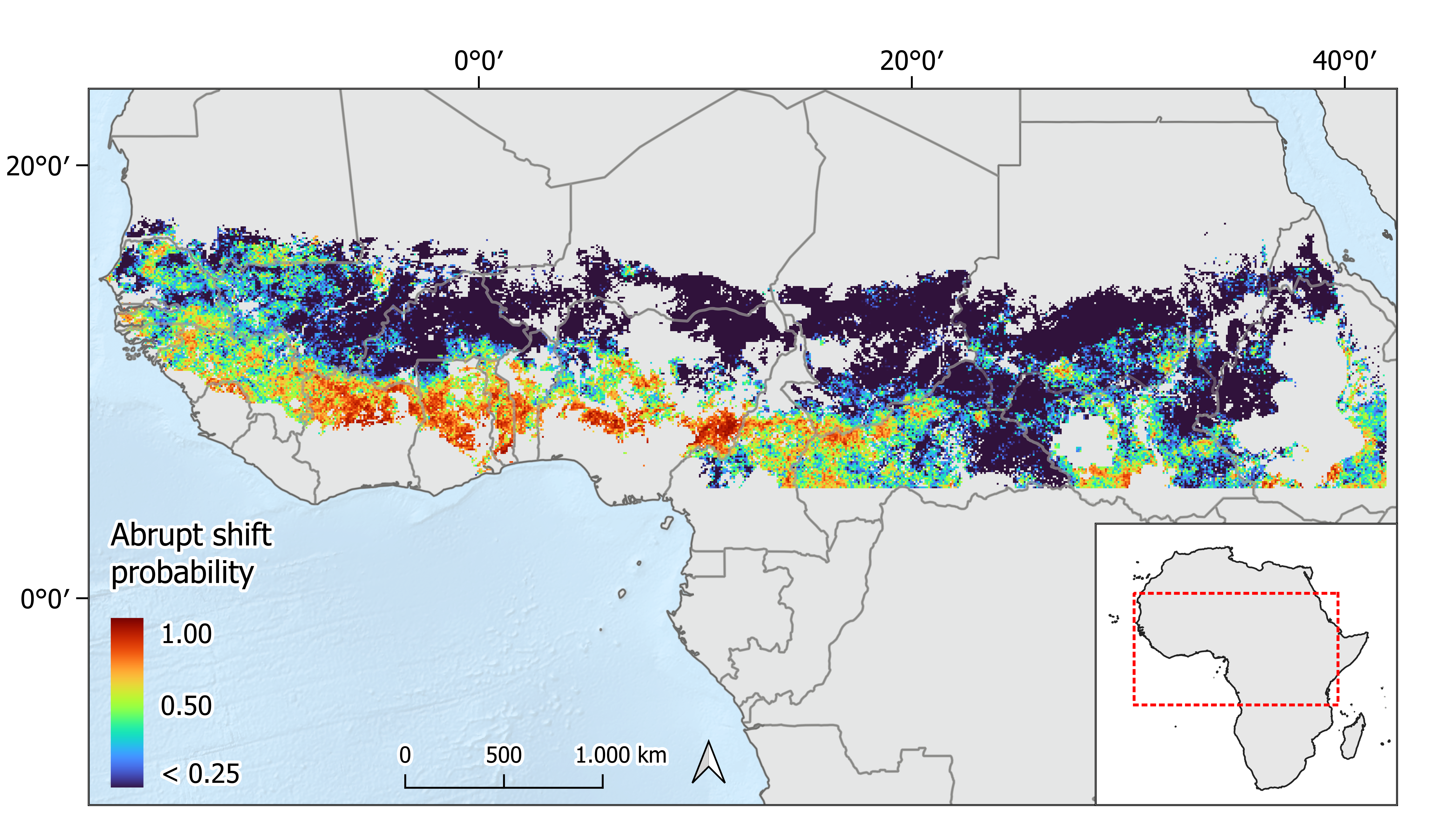
Climate change and human-induced land degradation threaten dryland ecosystems, vital to one-third of the global population and pivotal to inter-annual global carbon fluxes. Early warning systems are essential for guiding conservation, climate change mitigation and alleviating food insecurity in drylands. Here we show that a machine learning-based approach can predict the probability of abrupt shifts in Sudano–Sahelian dryland vegetation functioning (75.1% accuracy; 76.6% precision) particularly where measures of resilience (temporal autocorrelation) are supplemented with proxies for vegetation and rainfall dynamics and other environmental factors.
Paulo N. Bernardino, Wanda De Keersmaecker, Stéphanie Horion, Stefan Oehmcke, Fabian Gieseke, Rasmus Fensholt, Ruben Van De Kerchove, Stef Lhermitte, Christin Abel, Koenraad Van Meerbeek, Jan Verbesselt, Ben Somers

Climate change and anthropogenic pressures are increasingly driving abrupt regime shifts (RSs) in natural ecosystems, leading to biodiversity loss and disruptions in their functioning. In systems with alternative stable states maintained by feedback mechanisms, such shifts are difficult to reverse due to hysteresis. This study highlights the importance of integrating field and remote sensing data to monitor ecosystem transitions. By identifying resilience loss and RS occurrence, our approach offers valuable insights for conservation and restoration planning, emphasizing the need for adaptive fire management strategies to mitigate degradation and promote ecosystem recovery.
Paulo N. Bernardino, Lori Giagnacovo, Bart Muys, Ben Somers, Sybryn L. Maes
Environmental Research Letters (2025)
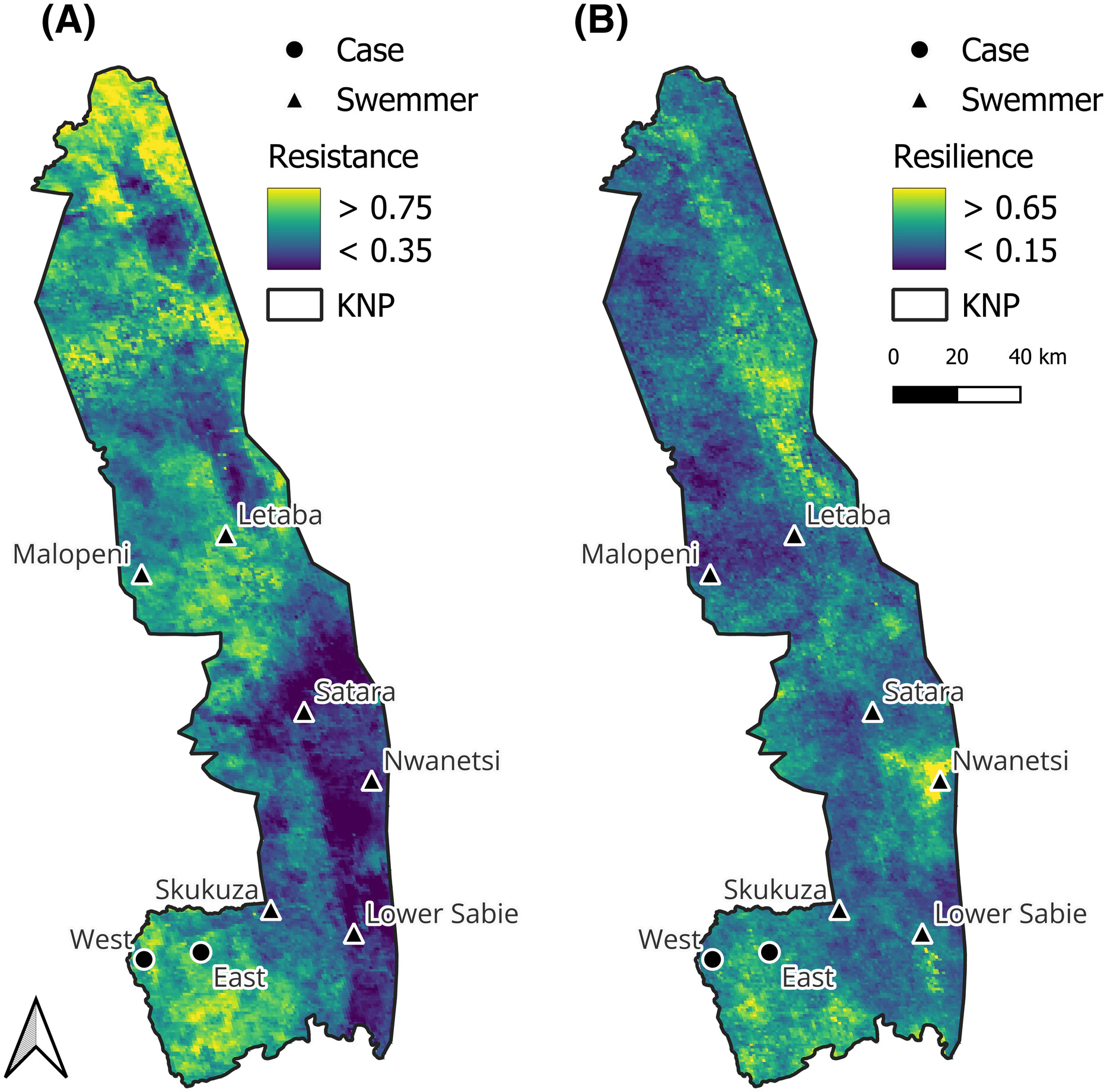
Savannas, defined by a balance of woody and herbaceous vegetation, are vital for global biodiversity and carbon sequestration. Yet, their stability is increasingly at risk due to climate change and human impacts. This research deepens our understanding of savanna stability by clarifying the role of regional drivers, like fire and climate, alongside long-term factors, like soil composition and woody cover.
Liezl M. Vermeulen, Koenraad Van Meerbeek, Paulo N. Bernardino, Jasper Slingsby, Bruno Verbist, Ben Somers
Remote Sensing in Ecology and Conservation (2025)
Tropical and subtropical grasslands and savannas have historically been neglected in global and local conservation policies. As a result, nearly half of their coverage has been lost. The resulting biodiversity and ecosystem service losses, including the ability to mitigate climate change, are profound and irreversible. As scientists specialized in ecology, conservation, and restoration, from around the world, we call on policymakers at COP 16 to act decisively: Tropical and subtropical grasslands and savannas matter for biodiversity protection, and the future of this planet relies on these ecosystems to the same extent it relies on forests.
Natashi Pilon, Franciele Peixoto, Rafael S. Oliveira, Ana Carolina C. Oliveira, Julio Alquéres, (…) Paulo N. Bernardino, (…) Larissa Verona, (…) Amy E. Zanne, Giselda Durigan
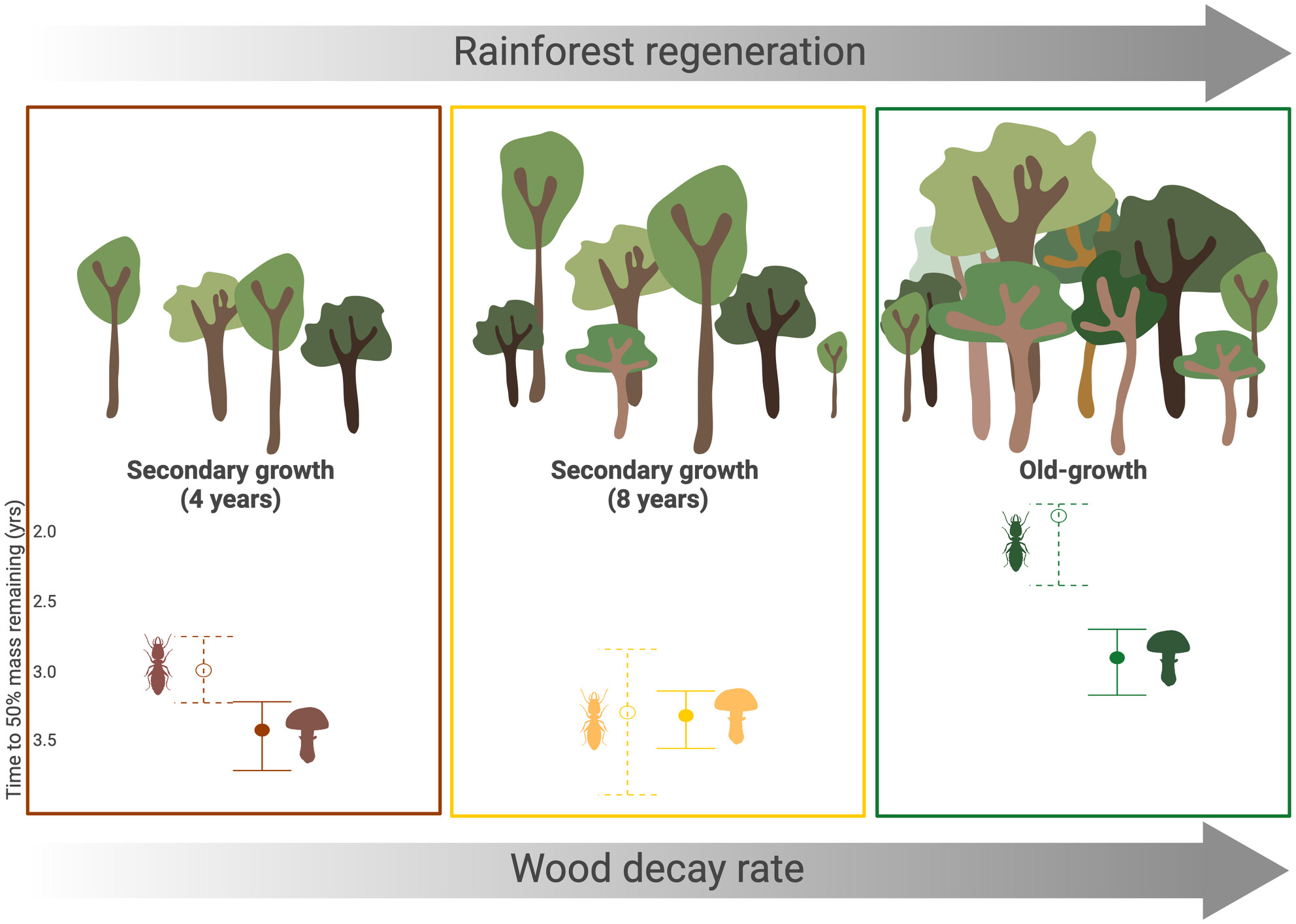
Contrary to common assumptions, fungal communities and their wood decay functions were resilient and recovered relatively quickly within secondary growth rainforests; however, those of termites did not, which could reduce carbon and nutrient cycling in secondary growth rainforests. Active management methods such as the local transplant of termite- and fungi-occupied logs could accelerate the recovery of these ecosystems.
Baptiste J. Wijas, Habacuc Flores-Moreno, Steven D. Allison, Lucas A. Cernusak, Alexander W. Cheesman, Paul Eggleton, Robert M. Kooyman, Jeff R. Powell, Amy E. Zanne
Journal of Applied Ecology (2025)

This paper focuses on the detection of breakpoints, indicative of shifts in ecosystem functioning, while also determining relevant ecosystem characteristics and climatic drivers that increase susceptibility to these shifts within the semi-arid to arid savanna biome. Utilising a remote sensing change detection approach and rain use efficiency (RaUE) as a proxy for ecosystem functioning, spatial and temporal patterns of breakpoints in the savanna biome were identified. We then employed a novel combination of survival analysis and remote sensing time series analysis to compare ecosystem characteristics and climatic drivers in areas experiencing breakpoints versus areas with stable ecosystem functioning.
Renata C. Bovi, Daigard R. Ortega-Rodriguez, Bruna Hornink, Gabriela M. Olmedo, Gabriel Assis-Pereira, Mario Tomazello-Filho, Miguel Cooper, Angelo F. Bernardino, Tiago O. Ferreira
Agricultural and Forest Meteorology (2024)
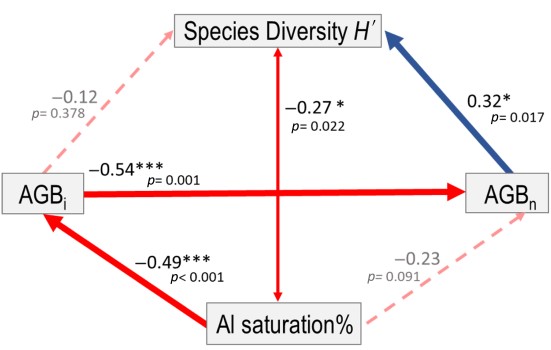
In a Cerrado grassland undergoing restoration study, we tested whether soil acidification could restore native soil conditions and control invasives using 56 plots across 14 blocks. We hypothesized that decreased soil pH and nutrient availability would reduce invasive biomass and enhance diversity. We show that acidification reduced invasive biomass by 71%, with acidification negatively affecting invasives while sparing natives.
Demétrius Lira-Martins, Rafael O. Xavier, Guilherme G. Mazzochini, Larissa S. Verona, Thalia Andreuccetti, Éder S. Martins, Fernanda V. de Barros, Mariana N. Furtado, Bethina Stein, Anna Abrahão, Alexandre Sampaio, Isabel Schmidt, Lucy Rowland, Rafael S. Oliveira
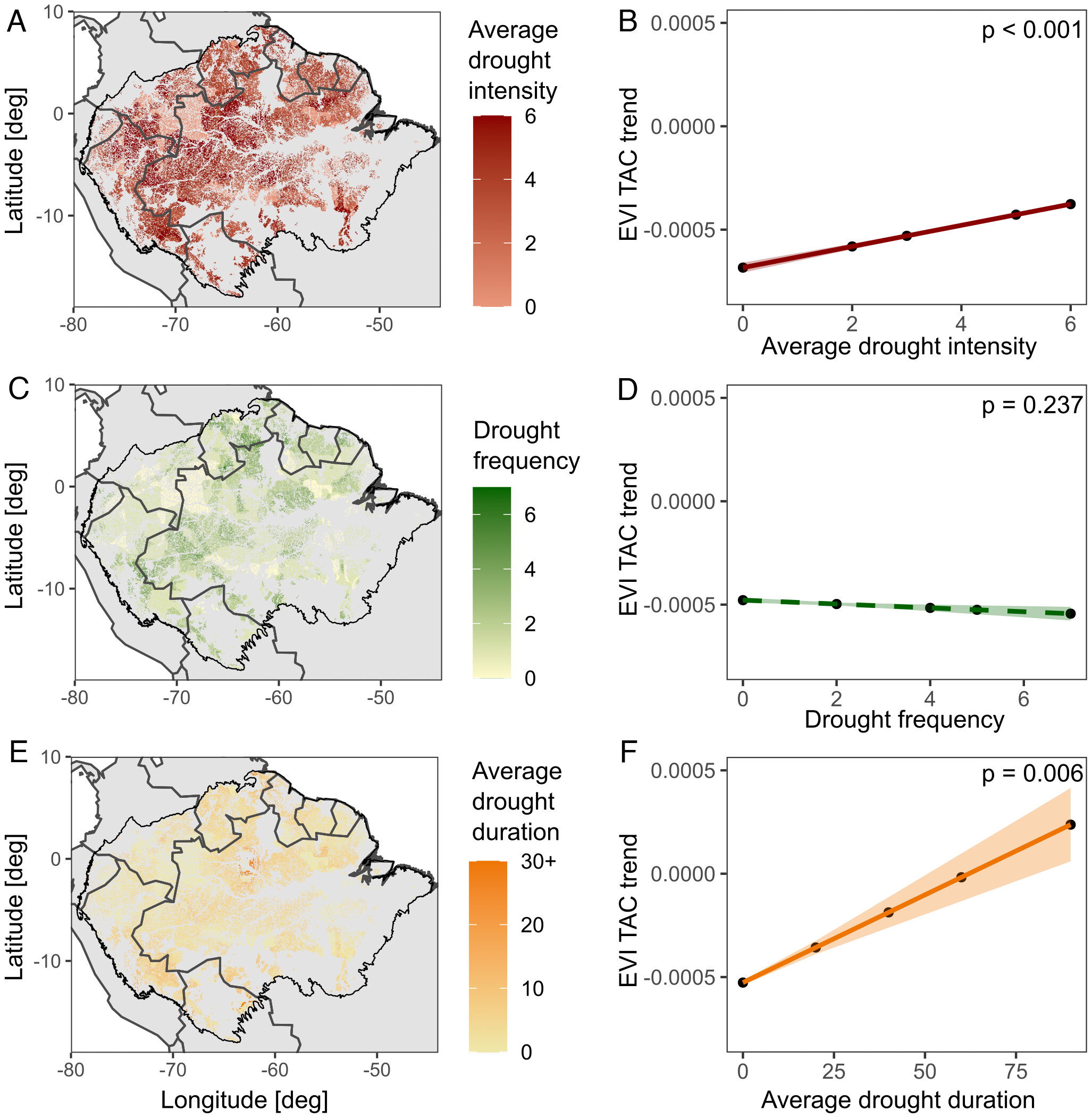
This paper focuses on the detection of breakpoints, indicative of shifts in ecosystem functioning, while also determining relevant ecosystem characteristics and climatic drivers that increase susceptibility to these shifts within the semi-arid to arid savanna biome. Utilising a remote sensing change detection approach and rain use efficiency (RaUE) as a proxy for ecosystem functioning, spatial and temporal patterns of breakpoints in the savanna biome were identified. We then employed a novel combination of survival analysis and remote sensing time series analysis to compare ecosystem characteristics and climatic drivers in areas experiencing breakpoints versus areas with stable ecosystem functioning.
Johanna Van Passel, Paulo N. Bernardino, Stef Lhermitte, Bianca F. Rius, Marina Hirota, Timo Conradi, Wanda de Keersmaeckerh, Koenraad Van Meerbeeka, Ben Somers
Proceedings of the National Academy of Sciences (2024)
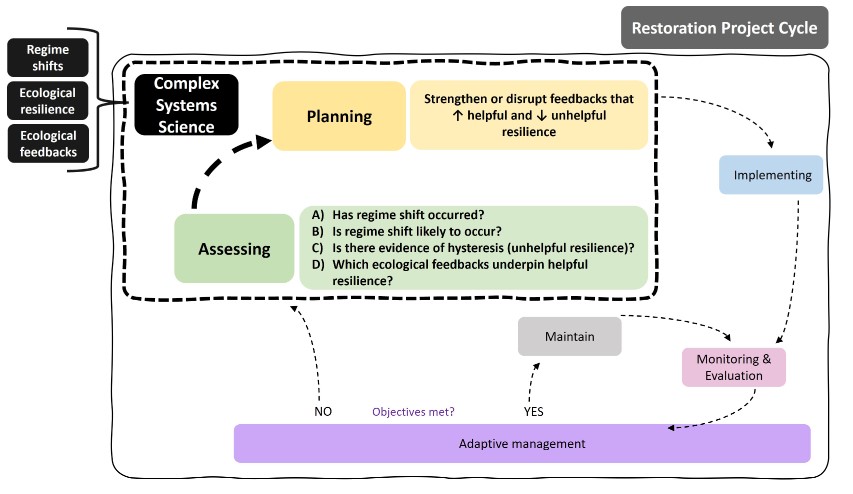
This paper focuses on the detection of breakpoints, indicative of shifts in ecosystem functioning, while also determining relevant ecosystem characteristics and climatic drivers that increase susceptibility to these shifts within the semi-arid to arid savanna biome. Utilising a remote sensing change detection approach and rain use efficiency (RaUE) as a proxy for ecosystem functioning, spatial and temporal patterns of breakpoints in the savanna biome were identified. We then employed a novel combination of survival analysis and remote sensing time series analysis to compare ecosystem characteristics and climatic drivers in areas experiencing breakpoints versus areas with stable ecosystem functioning.
S. L. Maes, M. P. Perring, R. Cohen, F. K. Akinnifesi, A. Bargués-Tobella, J.-F. Bastin, M. Bauters, Paulo N. Bernardino, P. H. S. Brancalion, J. M. Bullock, D. Ellison, A. Fayolle, T. Fremout, G. D. Gann, H. Hishe, M. Holmgren, U. Ilstedt, G. Mahy, C. Messier, C. L. Parr, C. M. Ryan, M. Sacande, M. Sankaran, M. S. Scheffer, K. N. Suding, K. Van Meerbeek, H. Verbeeck, B. J. P. Verbist, K. Verheyen, L. A. Winowiecki, B. Muys.
Journal of Applied Ecology (2024)

This paper focuses on the detection of breakpoints, indicative of shifts in ecosystem functioning, while also determining relevant ecosystem characteristics and climatic drivers that increase susceptibility to these shifts within the semi-arid to arid savanna biome. Utilising a remote sensing change detection approach and rain use efficiency (RaUE) as a proxy for ecosystem functioning, spatial and temporal patterns of breakpoints in the savanna biome were identified. We then employed a novel combination of survival analysis and remote sensing time series analysis to compare ecosystem characteristics and climatic drivers in areas experiencing breakpoints versus areas with stable ecosystem functioning.
Liezl M. Vermeulen, Bruno Verbist, Koenraad Van Meerbeek, Jasper Slingsby, Paulo N. Bernardino, Ben Somers
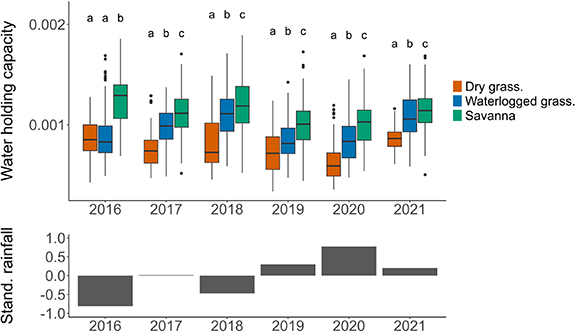
This study investigates the potential of Sentinel-1 C-band Synthetic Aperture Radar (SAR) data for estimating VWC in natural ecosystems in central Brazil. We assessed (i) how well Sentinel-1 SAR data can capture variations in VWC over three different vegetation types (i.e. dry and waterlogged grasslands, and savannas) and (ii) how the studied vegetation types respond to seasonal dry periods in terms of water content.
Paulo N. Bernardino, Rafael S. Oliveira, Koenraad Van Meerbeek, Marina Hirota, Mariana N. Furtado, Isabela A. Sanches, Ben Somers
Environmental Research Letters (2024)
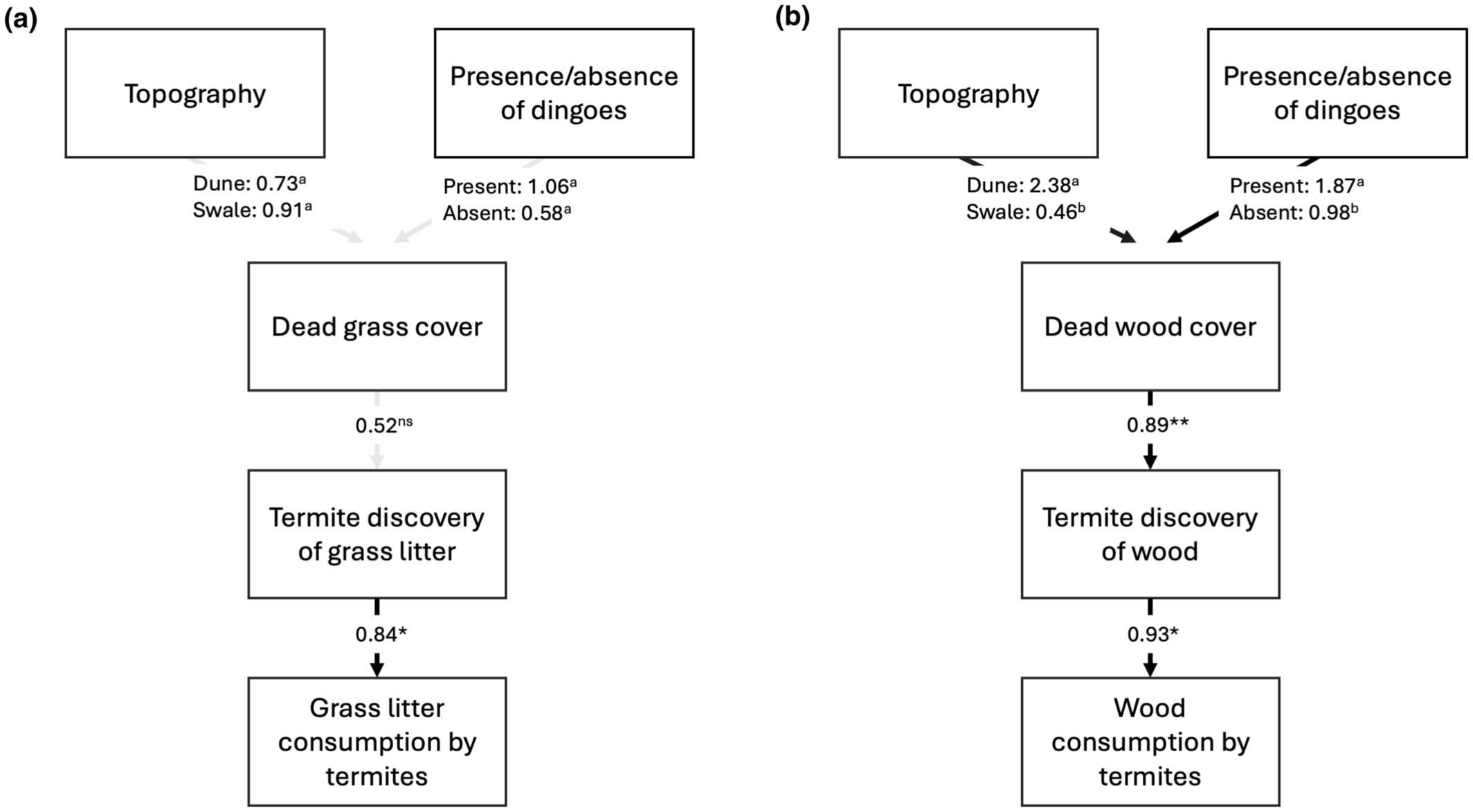
We examined the influence of resource availability gradients on the importance of termites in the decomposition of wood and grass litter. Our results show that termites were the predominant decomposition agent at these dryland sites, and termite wood, but not litter, decomposition was spatially variable and increased with habitat wood availability, which was greatest on dunes and where top predators were absent. Our findings highlight how spatial variability in resources in addition to other factors that we do not document but are known to be influenced by the presence of top predators, such as insectivore predation rates, across the landscape could affect ecosystem functions such as decomposition.
Baptiste J. Wijas, Mike Letnic, William K. Cornwell

We modelled and quantified internal stem damage to test the effect of damage on aboveground biomass estimation, using both allometric and lidar approaches, for individual trees and total estimated biomass in a tropical savanna ecosystem. We found that when internal stem damage is low, terrestrial lidar can be used to estimate biomass with low levels of error, however more damaged trees are likely to be overestimated for biomass if damage goes unaccounted for.
Jed Calvert, Abbey R. Yatsko, Judy Bresgi, Alexander W. Cheesman, Keith Cook, James Crowe, Indigo Gambold, Caleb Jones, Liam O Connor, Tony Peter, Pedro Russell-Smith, Elisha Taylor, Blair Trigger, Baptiste Wijas, Amy E. Zanne
Methods in Ecology and Evolution (2024)
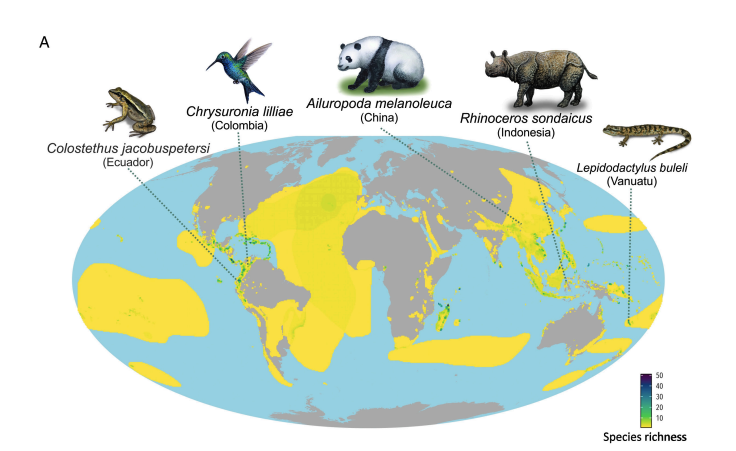
In this study, we show his study explores the global overlap between species distributions and the occurrences of earthquakes, hurricanes, tsunamis, and volcanoes to assess risk for terrestrial vertebrates. Species at high risk are mainly found in the tropics and on islands, and the authors suggest that conservation strategies may become pivotal for the survival of those species in the next decades.
Fernando Goncalves, Harith Farooq, Mike Harfoot, Mathias M. Pires, Nacho Villar, Lilian Sales, Carolina Carvalho, Carolina Bello, Carine Emer, Ricardo S. Bovendorp, Calebe Mendes, Gabrielle Beca, Lais Lautenschlager, Yuri Souza, Felipe Pedrosa, Claudia Paz, Valesca B. Zipparro, Paula Akkawi, William Berce, Fabiano Farah, Andre V. L. Freitas, Luis Fabio Silveira, Fabio Olmos, Jonas Geldmann, Bo Dalsgaard, Mauro Galetti

In this study, we show the growth of C. fissilis trees is directly dependent on climate variability, suggesting that more abundant precipitation and higher winter temperatures, as projected for the future climate of southern Brazil, will have a positive effect on tree growth.
Cláudia Fontana, Lidio López, Guaciara M. Santos, Ricardo Villalba, Bruna Hornink, Gabriel Assis-Pereira, Fidel A. Roig, Mario Tomazello-Filho
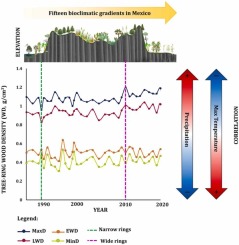
In this study, we model the sensitivity of intra-annual wood density in tree-rings for 15 species distributed across a broad bioclimatic and biodiverse gradient in the Mexican Republic. Maximum temperature and precipitation stand out as key drivers of temporal density fluctuations, and our results open new paradigms for densitometry as a proxy for ecological processes that species face in anticipating dieback phenomena, mortality rates, and resilience mechanisms.
Marín Pompa-García, Eduardo Daniel Vivar-Vivar, Bruna Hornink, José Alexis Martínez-Rivas, Daigard Ricardo Ortega-Rodriguez, Mario Tomazello-Filho

In this study, we evaluated the relation between local-scale variation in plant community structure with the decay rates of deadwood and the relative importance of biotic and abiotic decay agents in deadwood decay in Neotropical Cerrado. Across sites, we found termites and microbes decomposed wood twice as fast as microbes alone, while solar radiation was not a strong driver of deadwood decay in our sites. Additionally, local-scale variation in plant community structure affected deadwood decay, as decay rates and frequency of wood blocks discovered by termites were lower in woodlands than in grasslands and savannas.
André M. D`Angioli, Amy E. Zanne, Reginaldo Constantino, Larissa S. Verona, Rafael S. Oliveira

Here, we investigated the relative roles of microbes and termites in wood decomposition across precipitation gradients in space, time and with a simulated drought experiment in tropical Australia. Consistent with expectations, microbial-mediated wood decomposition was slowest in dry savanna sites, dry seasons and simulated drought conditions. Taken together, we found that spatial and seasonal variation in precipitation is important in shaping wood decomposition rates as driven by termites and microbes, although these different gradients do not equally impact decomposition agents.
Baptiste J. Wijas, Habacuc Flores-Moreno, Steven D. Allison, Luciana Chavez Rodriguez, Alexander W. Cheesman, Lucas A. Cernusak, Rebecca Clement, Will K. Cornwell, Elizabeth S. Duan, Paul Eggleton, Marc V. Rosenfield, Abbey R. Yatsko, Amy E. Zanne
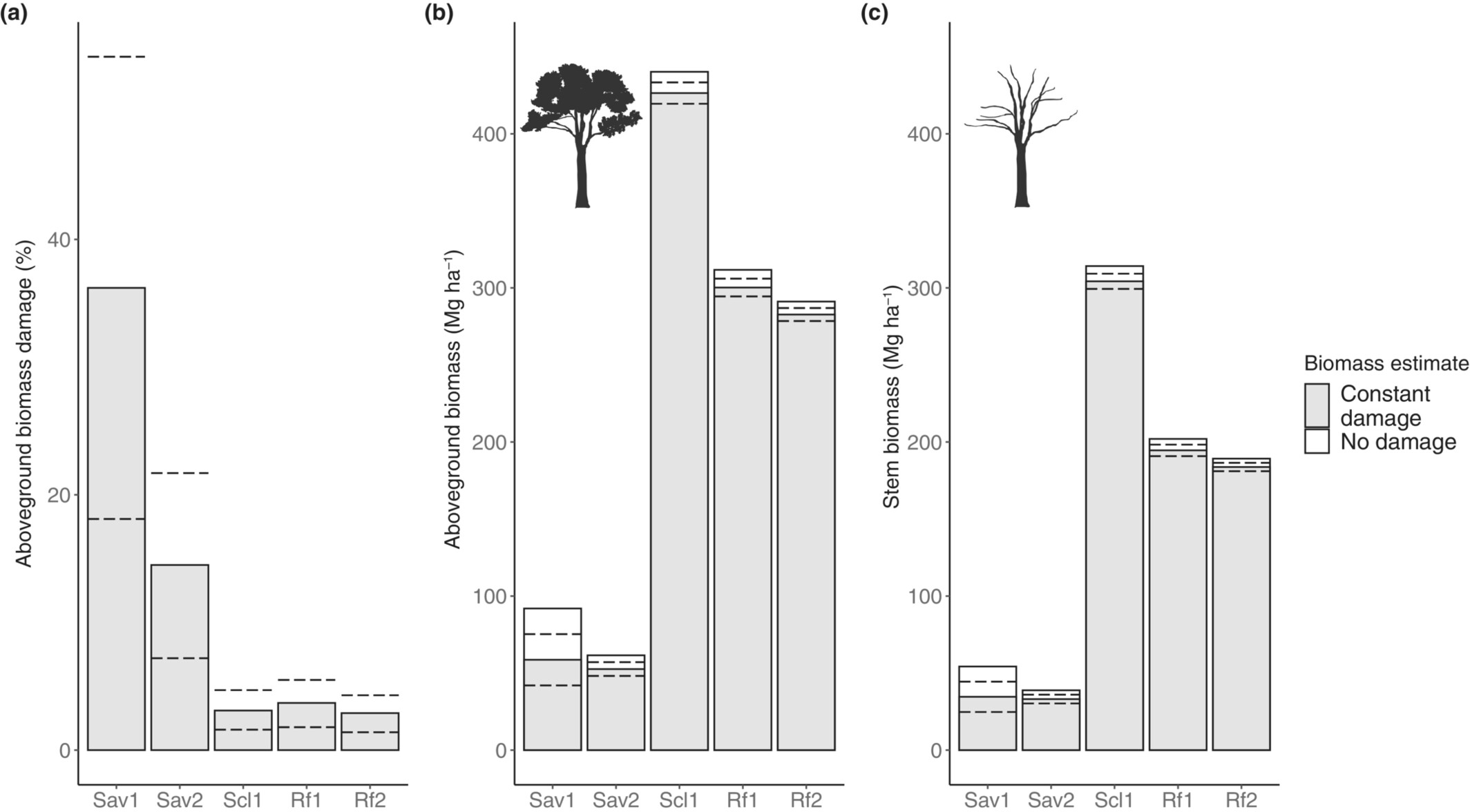
We investigated internal stem damage across five sites in tropical Australia along a precipitation gradient. We estimated the amount of internal aboveground biomass damaged in living trees and measured four potential stem damage predictors. Stem damage increased with increasing diameter, wood density, and termite pressure and decreased with increasing precipitation. High wood density stems sustained less damage in wet sites and more damage in dry sites, likely a result of shifting decomposer communities and their differing responses to changes in tree species and wood traits across sites.
Habacuc Flores-Moreno, Abbey R. Yatsko, Alexander W. Cheesman, Steven D. Allison, Lucas A. Cernusak, Rose Cheney, Rebecca Clement, Wendy Cooper, Paul Eggleton, Rigel Jensen, Marc Rosenfield, Amy E. Zanne
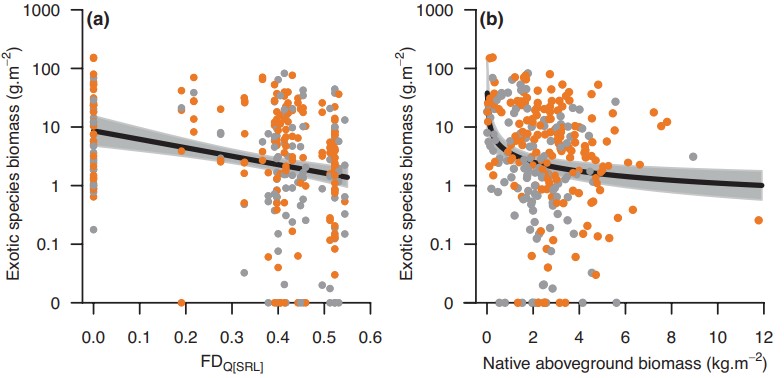
We investigated how native grass communities composed by species with different ecological strategies affect the invasion success in two soil types of abandoned pastures in the Cerrado. Specifically, we tested the hypothesis that greater above- and below-ground functional diversity reduces exotic species invasion. We also evaluated whether the isolated effects of native species on invasion were positive or negative.
Guilherme G. Mazzochini, Demétrius Lira-Martins, Fernanda V. de Barros, Ana C. C. Oliveira, Rafael O. Xavier, Mariana N. Furtado, Larissa S. Verona, Ricardo A. G. Viani, Lucy Rowland, Rafael S. Oliveira
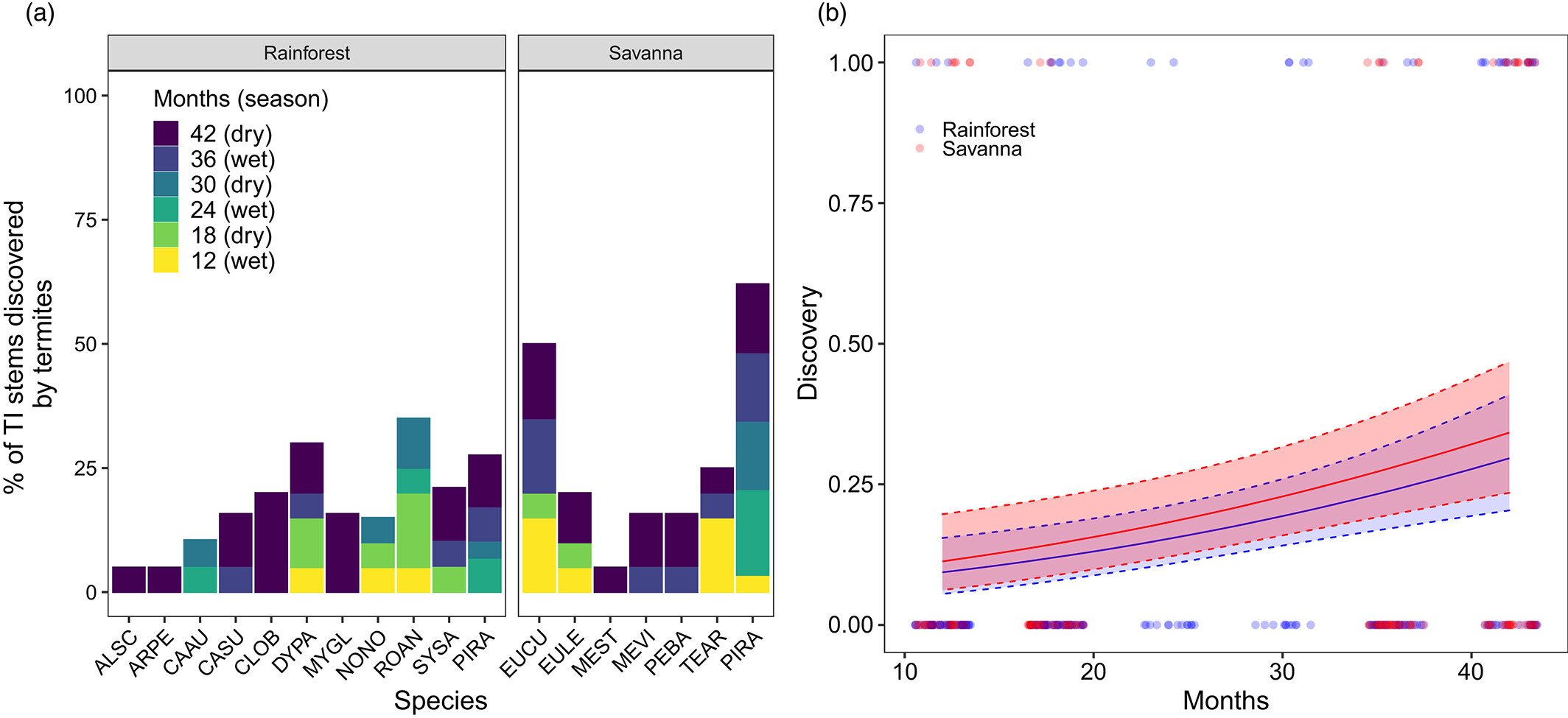
Ecosystem-scale predictions of deadwood turnover and carbon storage should account for the impact of wood traits on decomposer communities. In tropical Australia, termite-driven decay was lower than expected for native wood on the ground. Even if termites are present, they may not always increase decomposition rates of fallen native wood in tropical forests. Our study shows how the drivers of wood decay differ between Australian tropical rainforest and savanna; further research should test whether such differences apply world-wide.
Stephanie Law, Habacuc Flores-Moreno, Alexander W. Cheesman, Rebecca Clement, Marc Rosenfield, Abbey Yatsko, Lucas A. Cernusak, James W. Dalling, Thomas Canam, Isra Abo Iqsaysa, Elizabeth S. Duan, Steven D. Allison, Paul Eggleton, Amy E. Zanne

Although changes in plant phenology are largely attributed to changes in climate, the roles of other factors such as genetic constraints, competition, and self-compatibility are underexplored. Spring precipitation and other climate-related factors were dominant predictors of phenological variance. Our results emphasize the strong effect of precipitation on phenology, especially in the moisture-limited habitats preferred by Leavenworthia. Among the many factors that determine phenology, climate is the dominant influence, indicating that the effects of climate change on phenology are expected to increase.
Kelsey B. Bartlett, Matthew W. Austin, James B. Beck, Amy E. Zanne, Adam B. Smith
American Journal of Botany (2023)

Despite host-fungal symbiotic interactions being ubiquitous in all ecosystems, understanding how symbiosis has shaped the ecology and evolution of fungal spores that are involved in dispersal and colonization of their hosts has been ignored in life-history studies. In this study, symbiotic status explained more variation than climatic variables in the current distribution of spore sizes of plant-associated fungi at a global scale while the dispersal potential of their spores is more restricted compared to free-living fungi. Our work advances life-history theory by highlighting how the interaction between symbiosis and offspring morphology shapes the reproductive and dispersal strategies among living forms.
Carlos A. Aguilar- Trigueros, Franz-Sebastian Krah, William K. Cornwell, Amy E. Zanne, et al.

Decomposition rates vary with temperature and precipitation, in part because of the effects of climate on decomposer organisms. Although microbes are widely recognized as decomposers, animals such as insects also play a key role in tropical systems. This global study quantifies climate-related variation in wood decomposition by both microbes and termites. Climate influenced both microbial and termite decomposition, but termite presence and activity were more sensitive to temperature. Termites may thus play a larger role in global wood decomposition as the climate warms.
Amy E. Zanne, Habacuc Flores-Moreno, Jeff R. Powell, William K. Cornwell, et al.
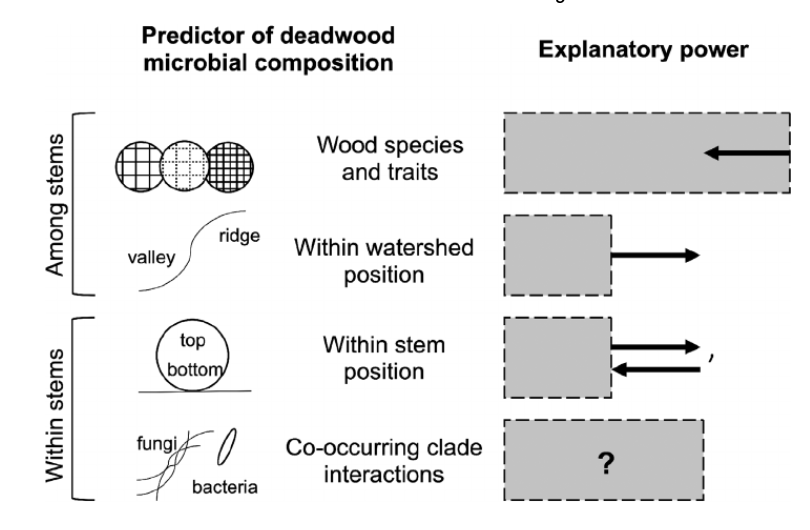
Microbial community structure varied more strongly with wood traits than with spatial locations, mirroring the relative role of these factors on decay rates on the same pieces of wood even after 5 years. Co‐occurring fungal and bacterial communities persistently influenced one another independently from their shared environmental conditions.
Marissa R. Lee, Brad Oberle, Wendy Olivas, Darcy F. Young, Amy E. Zanne
Environmental Microbiology (2020)
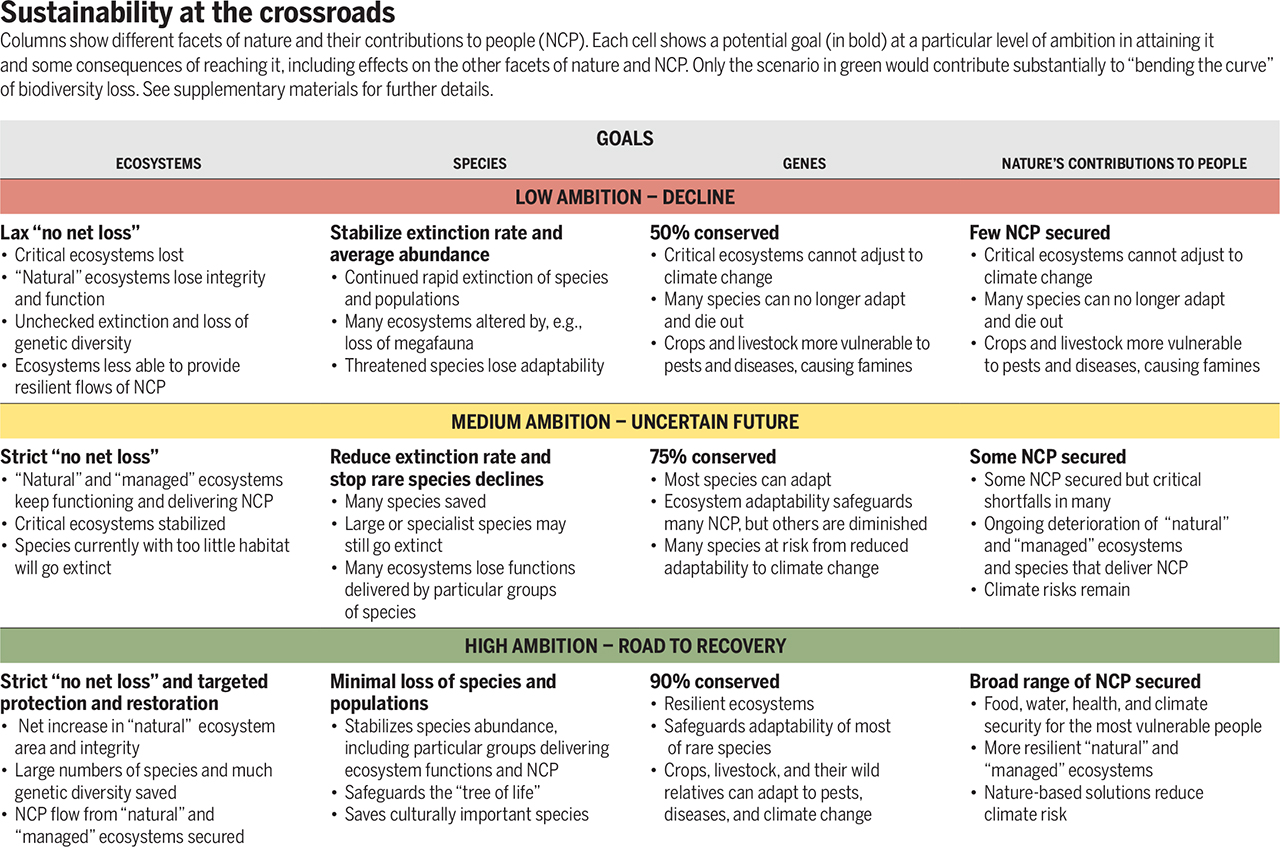
In response to the goals proposed in the draft post-2020 Global Biodiversity Framework (GBF) made public by the CBD, we urge negotiators to consider three points that are critical if the agreed goals are to stabilize or reverse nature’s decline.
S Díaz, N Zafra-Calvo, A Purvis, PH Verburg, D Obura, P Leadley, R Chaplin-Kramer, L De Meester, E Dulloo, B Martín-López, MR Shaw, P Visconti, W Broadgate, MW Bruford, ND Burgess, J Cavender-Bares, F DeClerck, JM Fernández-Palacios, LA Garibaldi, SLL Hill, F Isbell, CK Khoury, CB Krug, J Liu, M Maron, PJK McGowan, HM Pereira, V Reyes-García, J Rocha, C Rondinini, L Shannon, YJ Shin, PVR Snelgrove, EM Spehn, B Strassburg, SM Subramanian, JJ Tewksbury, JEM Watson, AE Zanne
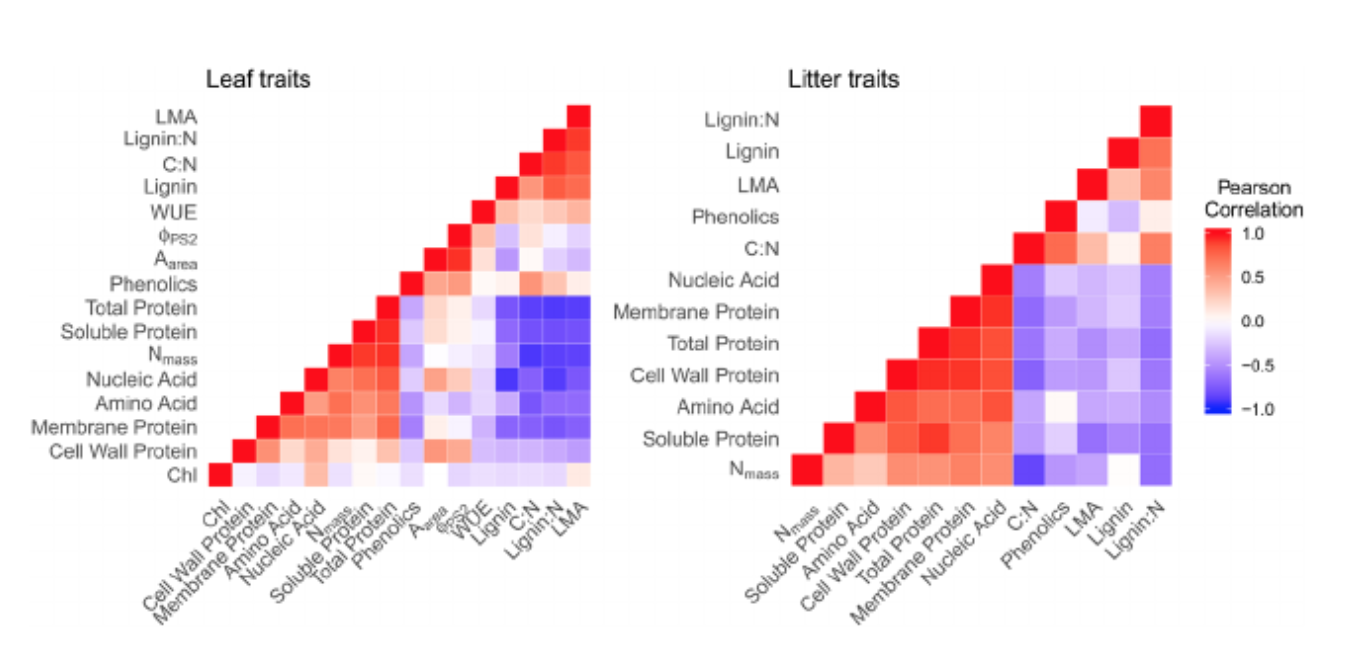
We decomposed green leaves and naturally senesced leaf litter of nine species representing a wide range of leaf functional traits. We evaluated the ability of traits associated with leaf and litter physiology, N biochemistry and carbon quality to predict litter decomposition.
Marc V. Rosenfield, Jason K. Keller, Catrina Clausen, Kimberlee Cyphers, Jennifer L. Funk
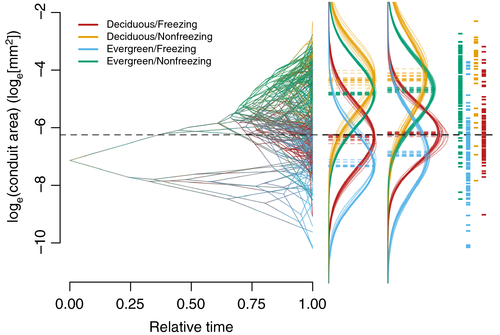
To understand linear and nonlinear relationships between angiosperm structure and biogeographic distributions, we integrated large datasets of growth habits, conduit sizes, leaf phenologies, evolutionary histories, and environmental limits.
Amy E. Zanne, William D. Pearse, William K. Cornwell, Daniel J. McGlinn, Ian J. Wright, Josef C. Uyeda
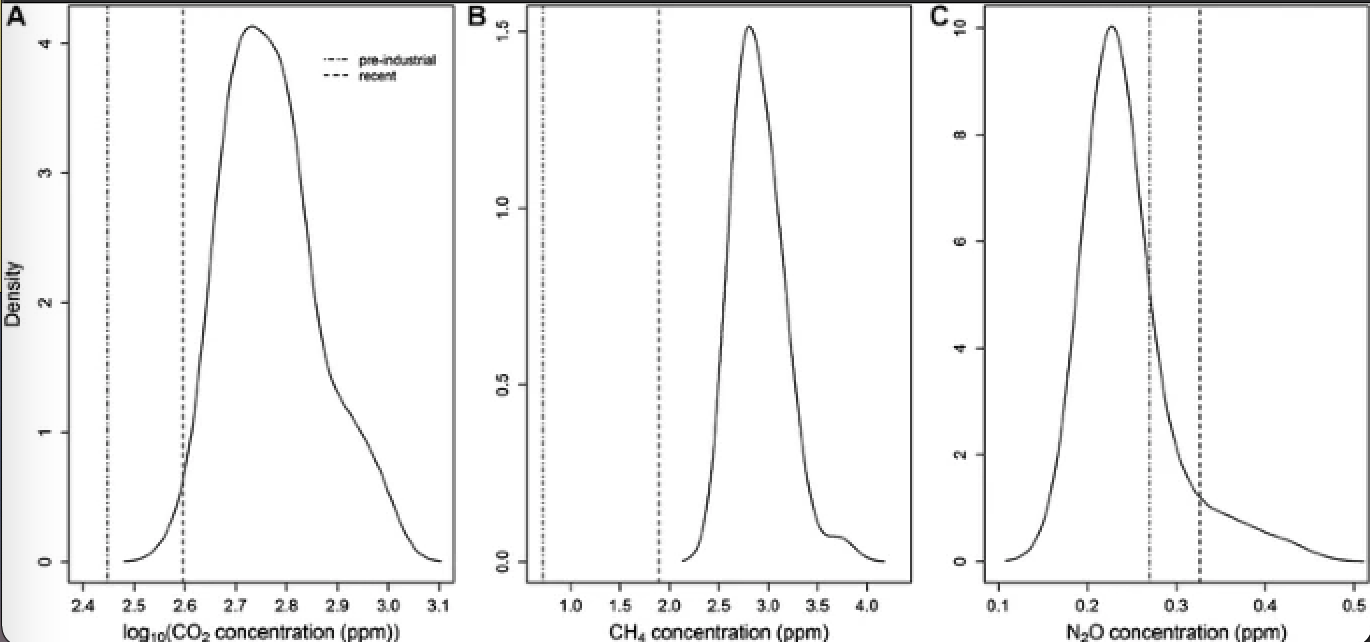
We implemented a three-way factorial experiment in Fraxinus americana, (white ash), an iconic North American species threatened by an invasive beetle.
Brad Oberle, Kristofer R. Covey, Kevin M. Dunham, Edgar J. Hernandez, Maranda L. Walton, Darcy F. Young, Amy E. Zanne
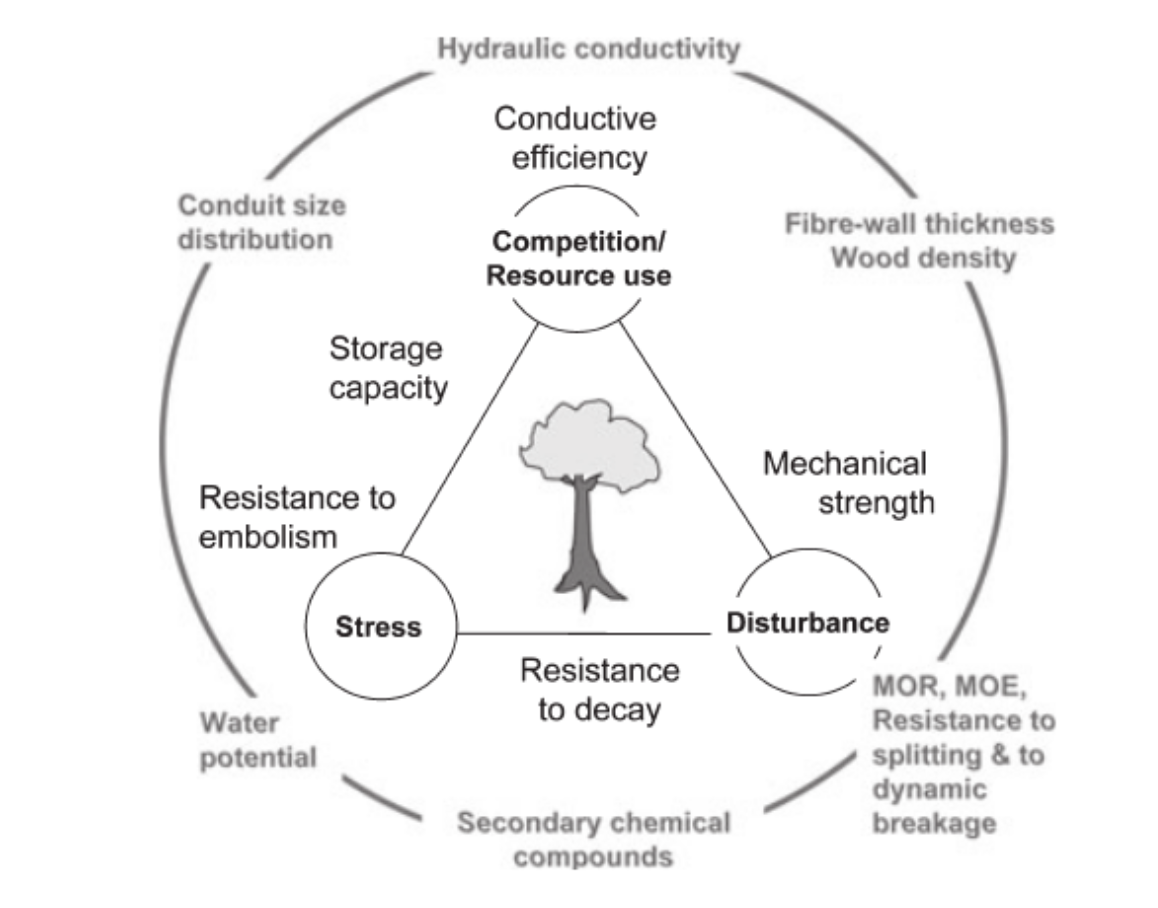
To draw together our current understanding of wood function, we identify and collate data on the major wood functional traits, including the largest wood density database to date (8412 taxa), mechanical strength measures and anatomical features, as well as clade‐specific features such as secondary chemistry.
Jerome Chave, David Coomes, Steven Jansen, Simon L. Lewis, Nathan G. Swenson, Amy E. Zanne

